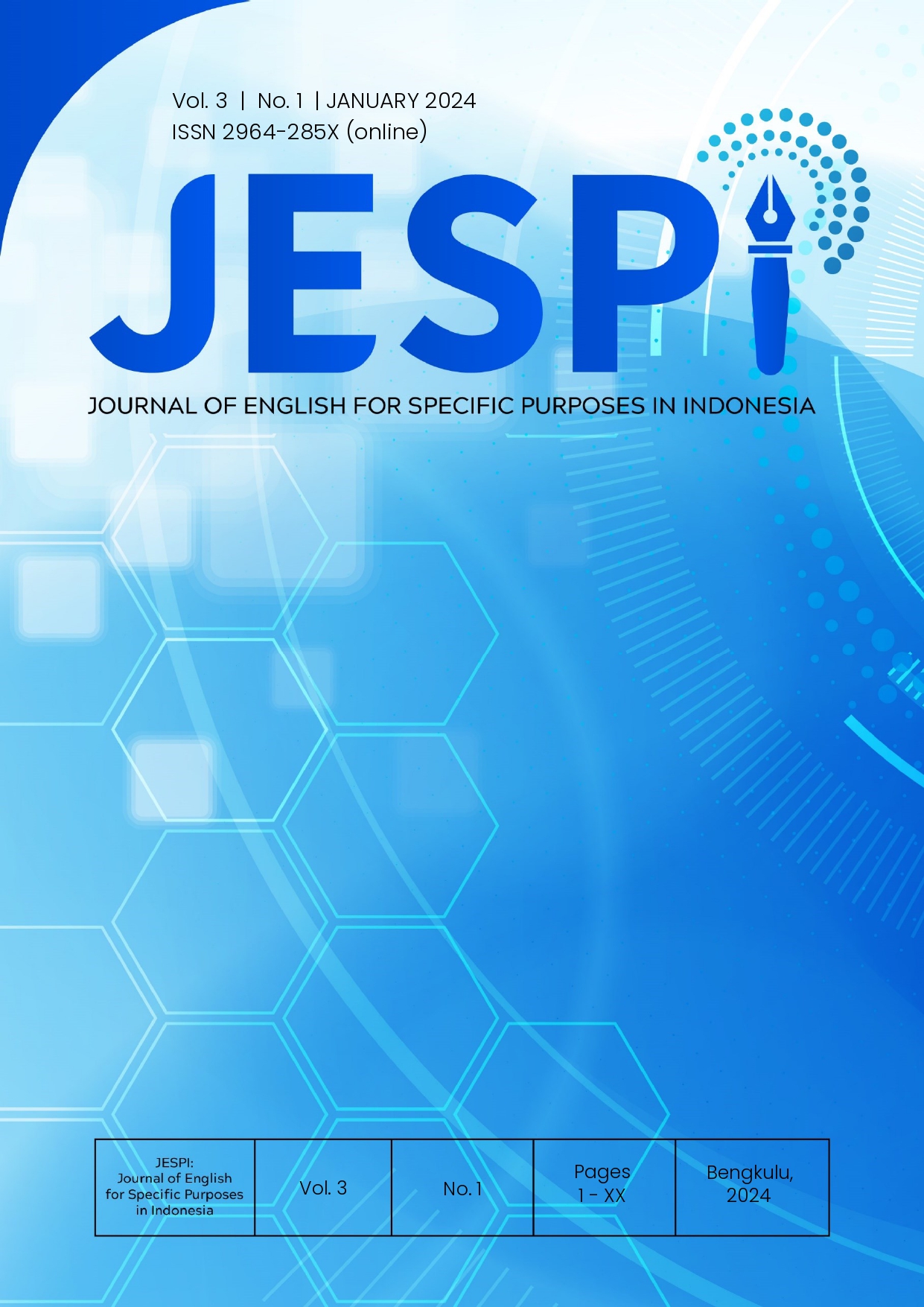Main Article Content
Abstract
The most essential element of English teaching is culture. The cultural content of the language education and learning process supports students to describe the language that exists in that culture. Cultural content is communicated through the textbook as essential in education and learning. So, culture content analysis is critical to selecting, developing, and effectively using the correct textbooks. This research aims to examine the types of cultures represented in textbooks, classify them into source, target, and international cultures (Cortazzi & Jin, 1999), and how the cultures of the classified textbooks are represented. It is to discover aesthetic, social, semantic, and practical senses (Adaskou, Britten & Fahsi, 1990). Researchers used descriptive qualitative methods. This research data is from the English textbook When English Rings for Junior High School. This data is cultural material gathered from all textbook readings, conversations, tasks, and images and converted in frequency. Two results were found in the textbook analysis. First are the results presented in the textbook entitled "When English Rings the Bell," which are source culture, target culture, and international culture. Secondly, the culture of both textbooks was represented primarily by pragmatic sensations compared to aesthetic, semantic, and sociological sensations. Therefore, there was an imbalance between the type of culture presented and how cultures were presented in the textbook.
Keywords
Article Details
Copyright (c) 2024 ritanti lasmita, Safnil Arsyad, Alamsyah Harahap

This work is licensed under a Creative Commons Attribution-ShareAlike 4.0 International License.

Ciptaan disebarluaskan di bawah Lisensi Creative Commons Atribusi-BerbagiSerupa 4.0 Internasional.
References
- Adaskou, K., Britten, D., & Fahsi, B. (1990). Design decisions on the cultural content of a secondary English course for Mororcco. ELT journal, 44(1), 3-10.
- Aliakbari, M. (2004, August). The Place of culture in the Iranian ELT textbooks in high school level. In 9th Conference of Pan-Pacific Association of Applied Linguis tics. Seoul, Korea.
- Bhaskaran, V. (2008). Research methods for social work. New Delhi: Rawat, 173- 193.
- Brody, J. (2003). A linguistic anthropological perspective on language and culture in the second language curriculum.Culture as the core: Perspectives on culture in second language learning, 37-52.
- Faris, I. N. I. (2014). Cultural Content Analysis of an English Textbook for Senior High Schoo Grade Three in Cianjur, West Java. Journal of English and Education, 2(2), 14-25.
- McKay, S. (2003). Teaching English as an international language: The Chilean context. ELT journal, 57(2), 139-148.
- Paige, R. M., Jorstad, H. L., Siaya, L., Klein, F., Colby, J., Lange, D., & Paige, R. (2003). Culture learning in language education. Culture as the core: Perspectives on culture in second language learning, 173-236.
- Risager, K. (2014). Analysing culture in learning materials. Sprogforum, 59, 78-86.
- Silvia, A. (2014). Cultural content in English textbooks used at Madrasah Tsanawiyah Negeri in DKI Jakarta. English Master of Education thesis, Syarif Hidayatullah State Islamic University Jakarta. Spencer-
- Wachidah, S., Asep, G., & Diyantari & Yuli, R. K. (2017). Bahasa Inggris: When English rings a bell. Jakarta: Kementerian Pendidikan dan Kebudayaan.
- Wen-Cheng, W., Chien-Hung, L., & Chung-Chieh, L. (2011). Thinking of the Textbook in the ESL/EFL Classroom. English Language Teaching, 4(2), 91-96.
- Yulianti, R. (2011). Content analysis on the English E-book" developing English competencies for Senior High School (SMA/MA) grade X"(Doctoral dissertation, Universitas Negeri Malang).
References
Adaskou, K., Britten, D., & Fahsi, B. (1990). Design decisions on the cultural content of a secondary English course for Mororcco. ELT journal, 44(1), 3-10.
Aliakbari, M. (2004, August). The Place of culture in the Iranian ELT textbooks in high school level. In 9th Conference of Pan-Pacific Association of Applied Linguis tics. Seoul, Korea.
Bhaskaran, V. (2008). Research methods for social work. New Delhi: Rawat, 173- 193.
Brody, J. (2003). A linguistic anthropological perspective on language and culture in the second language curriculum.Culture as the core: Perspectives on culture in second language learning, 37-52.
Faris, I. N. I. (2014). Cultural Content Analysis of an English Textbook for Senior High Schoo Grade Three in Cianjur, West Java. Journal of English and Education, 2(2), 14-25.
McKay, S. (2003). Teaching English as an international language: The Chilean context. ELT journal, 57(2), 139-148.
Paige, R. M., Jorstad, H. L., Siaya, L., Klein, F., Colby, J., Lange, D., & Paige, R. (2003). Culture learning in language education. Culture as the core: Perspectives on culture in second language learning, 173-236.
Risager, K. (2014). Analysing culture in learning materials. Sprogforum, 59, 78-86.
Silvia, A. (2014). Cultural content in English textbooks used at Madrasah Tsanawiyah Negeri in DKI Jakarta. English Master of Education thesis, Syarif Hidayatullah State Islamic University Jakarta. Spencer-
Wachidah, S., Asep, G., & Diyantari & Yuli, R. K. (2017). Bahasa Inggris: When English rings a bell. Jakarta: Kementerian Pendidikan dan Kebudayaan.
Wen-Cheng, W., Chien-Hung, L., & Chung-Chieh, L. (2011). Thinking of the Textbook in the ESL/EFL Classroom. English Language Teaching, 4(2), 91-96.
Yulianti, R. (2011). Content analysis on the English E-book" developing English competencies for Senior High School (SMA/MA) grade X"(Doctoral dissertation, Universitas Negeri Malang).
